Mongrels: a description of mongrel dogs and the subtleties of raising them

Mongrels are the largest group of dogs on earth. Moreover, they do not have names, are not classified, and are little studied. In fact, these are street dogs without pedigree and pedigree parents. They are often afraid, offended, but many are happy to take in the house just yard dogs. And not only for the protection of private housing, but also in apartments, as a companion and friend. Mongrels, like dogs of any other breed, have their merits and demerits. Before starting a dog, you need to study its characteristics.


Peculiarities
In our country, mongrel mongrels are very common. They do not stand out for their special beauty, but each of them is individual. Despite their inconspicuousness and low prestige, yard dogs are in great love among our fellow citizens, and can compete in this with the most thoroughbred champions. Such dogs are often used as watchmen and companions. This is a versatile group.
A mongrel is a dog born out of plan, her parents can be anyone: purebred dogs, mongrels, mestizo. Many representatives of the yard group are similar to any of the breeds: shepherd dogs, terriers. This is due to the fact that they have one or another thoroughbred dog in their family. Homeless dogs are nothing more than the product of a person's irresponsible attitude towards dogs. The abandoned animals multiplied quite vigorously, and this is how a huge and homeless canine diaspora developed.
There are even wolves in the genus of some mongrels.These are the most dangerous representatives of the courtyard: aggressive, brave, not oriented towards friendship with a person. Such animals are able to unite in flocks and attack. Uncontrolled breeding has resulted in excellent immunity in the dogs and menacing numbers.
The description of the mongrel is rather arbitrary, because they do not have a single standard and characteristics. For thoroughbred representatives, the exterior is incredibly important, breeders artificially fix certain genes and traits. Mongrels are free in this sense, they have absolutely no restrictions.
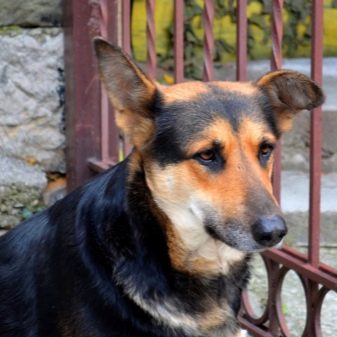

They look diverse, only conditional differences can be distinguished according to regional characteristics, height, weight. The appearance of the mongrels was influenced by the total fashion for the breed.
During the trend of hounds, huskies and shepherd dogs, yard dogs gradually acquired the characteristic features of the breeds. Today, a mongrel can look different: there are beautiful, even spectacular representatives, there are inconspicuous, ordinary ones. The height and weight of dogs varies from miniature to large, but the most common is medium size.
Colors have practically no restrictions:
- redheads;
- black;
- white;
- gray;
- fawn;
- two- or three-color;
- with piebald, spots, specks, tan marks on any areas.
Outwardly, a dog can combine several characteristic features of a particular breed at once. The type of coat can be short or long, wavy or straight, thick or not too much. But almost all of them have a well-developed undercoat that allows them not to freeze on the street in any weather.
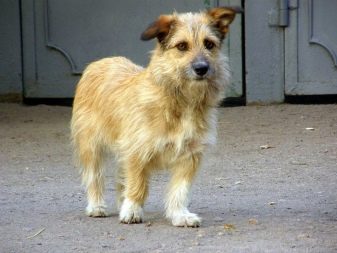

Health and Mind
First of all, mongrel dogs are believed to grow stronger and healthier. This is due not only to natural selection under conditions of difficult survival, but also to the highest heterozygosity. After all, pedigree dogs are limited in the choice of partners for offspring, therefore, in fact, they are relatives. This cannot but leave an imprint on their physiology, immunity, genetics. At the same time, one cannot talk about the unconditional health of mongrel dogs. They also suffer from a number of genetic diseases, mental abnormalities. Nevertheless, the more diverse ancestors a dog has in its pedigree, the stronger its immunity. Purebred individuals cannot boast of this.
The list of genetic abnormalities in mongrel dogs is much shorter, especially in comparison with young breeds, where interbreeding also occurs between close relatives. The ancients are gradually weeding out the bad gene in the population. In courtyards, everything happens much faster, all genes that interfere with the survival process are eliminated.
Natural selection gradually forms dogs that combine the best properties. They do not have to be constantly monitored by a veterinarian; with proper treatment, they can even cope with distemper.
But obesity is just as dangerous for mongrels as it is for many breeds.
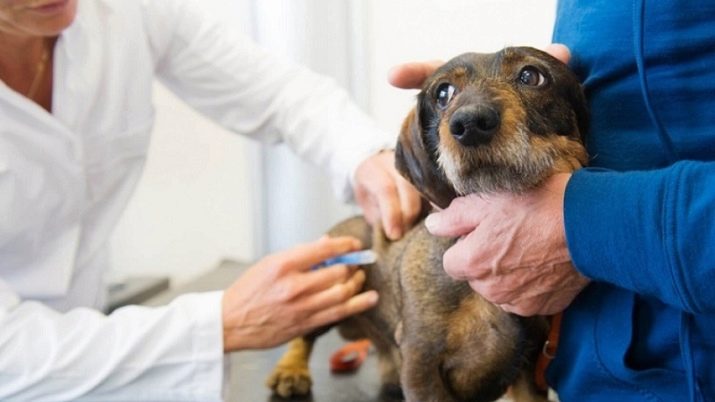
The most common diseases among yard dogs are:
- infectious diseases;
- eye diseases;
- skin problems.
Disorders of the gastrointestinal tract, blood diseases are less common. Babies up to 2 months and older dogs are most susceptible to diseases. Regardless of the age at which the dog from the street gets to the owner, it is necessary to examine the animal. It is also important to vaccinate and antiparasitic treatment.
As for the intelligence of mongrel dogs, there are many myths. Recent studies by Stockholm scientists have shown that the quality of purebred dogs decreases over time. Research has confirmed that human cravings for cute, lovable, and submissive animals have caused evolutionary laws to stop working. Therefore, it is far from the strongest who survive. The principles of modern dog breeding have led to the fact that the intellectual and behavioral abilities of breeds have declined. Moreover, scientists have managed to draw an alternative between appearance and mind.Most of the cutest ornamental breeds have the lowest intelligence.
At the same time, dog handlers stubbornly continue to assert that yard dogs are too stupid in comparison with pedigree dogs. This is nothing more than a myth, since many mongrels can perfectly withstand competition with representatives of many breeds. Moreover, about 80% of mongrels have noble ancestors in their pedigree.
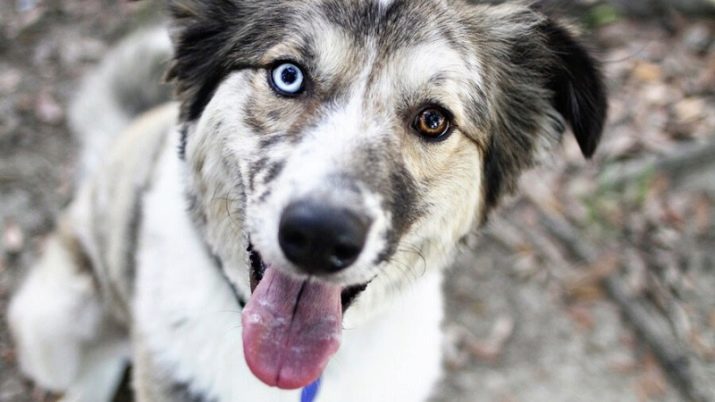
Character and behavior
Outdoor dogs do not have a well-defined standard of behavior. The temperament of the dog, its character traits is influenced not only by genetics, but also by the environment, living conditions. This is especially important at an early age of the puppy. Owners of mongrels note the following qualities:
- calm, balanced disposition;
- the strongest devotion and loyalty to the owner;
- activity, energy;
- sociability;
- physical strength, strength;
- good nature, but outbursts of aggression may occur;
- reactions are often unpredictable.
If there are children in the house, you need to think carefully about the decision to bring a yard dog from the street. It is better to pre-test the animal and evaluate its disposition.
It is very important to say about such a quality of a dog as loyalty. They are incredibly affectionate. Having got used to the owner and his family, they remain faithful to them forever. Yard dogs usually find language well with children and other animals. At the same time, strangers cause a negative reaction in them. Therefore, mongrels make excellent watchmen. Such a dog makes an excellent protector for all family members. The mongrel will be loyal to the owner, regardless of the age at which she came to him. Change of ownership becomes incredibly difficult for them.
They are very homesick even during short-term breakups.

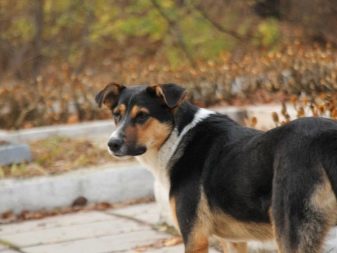
Advantages and disadvantages
Ignorance of the origin of mongrels is compensated by a large number of advantages:
- a high degree of affection and devotion, gratitude to the owner;
- excellent quick-wittedness, good intelligence;
- good training ability;
- energy, endurance;
- unpretentiousness in feeding, conditions of detention;
- excellent health, immunity to disease;
- long life;
- excellent guarding and protective qualities;
- not worth the money.
There are a number of disadvantages to consider:
- the unpredictability of neither appearance nor size as it grows;
- character and temperament are also not predicted;
- inability to participate in exhibition forums;
- many mongrels are mediocre looking and not overly pretty.

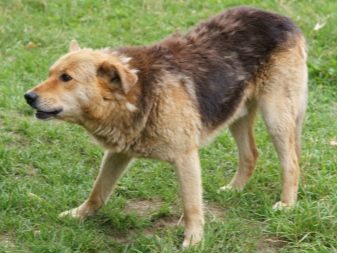
Conditions of detention and care
Keeping a mongrel will not be a problem in any home environment - both in an apartment and in a private house. These are unpretentious creatures who are content with a set of routine procedures.
- Hair care. First of all, the coat needs to be brushed on a regular basis. The frequency of this event depends on the type of coat and undercoat. Ideally, at least once every 3-4 days. For these purposes, a special brush is used for dogs with coarse or soft hair. From time to time, if necessary, the wool is trimmed so that tangles do not form.
- Water procedures. Includes daily cleaning of the paws after a walk, if the dog is kept in the apartment. Washing your dog is often discouraged as it damages the natural protective layer of the coat and skin. It is enough to bathe the mongrel no more than 4 times a year.
- Ears, eyes, skin care. First of all, this is a regular examination for the presence of contamination, inflammation. Remove dirt with cotton swabs or sticks. If you find an inflammatory process, pus, foreign objects, you should show the dog to a veterinarian. The dog's skin should be checked for all sorts of formations, insects, wounds, scratches.
- Oral cavity care. Every week you need to check your mouth and brush your teeth with special fluoride pastes, and against tartar.
- Nail care. Typically, claws are grinded against rocks and asphalt for walks, but clipping is sometimes required. The procedure is not recommended to be carried out more than once a month. It is necessary to use so many special clippers, it is prohibited to use scissors.
- Health. The dog is regularly required to be vaccinated and to carry out external and internal treatment for parasites.

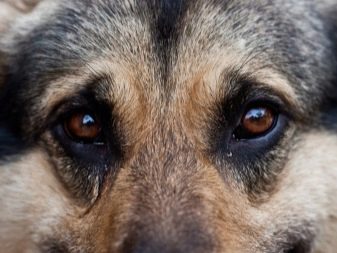
Feeding
Mongrels are not particularly picky and whimsical in food, their stomachs are adapted to a wide variety of foods. Therefore, feeding can be organized both with ready-made feed mixtures and with natural products. Newborns and puppies 1 month old receive food 5-6 times a day, in equal portions. After this age, the number of feedings is gradually reduced, and by 8 months it reaches two times. If you prefer ready-made food, then focus on the weight and age of the dog. Simple, natural food is great for mongrels.
A healthy dog's diet consists of boiled cereals in a broth of meat, bones, offal. From time to time give the dog sour milk, vegetables and fruits according to the season. Once every few days, you can diversify the menu with pitted sea-type fish, boiled eggs. It is strictly forbidden to give the dog food from your table, as well as:
- sweet, pastries;
- salty, peppery;
- smoked products.


Education and training
As already noted, the intelligence of mongrel dogs is quite high, it is easy to train them. Studies have shown that mongrels lose in training ability only to such highly intelligent breeds as a shepherd, collie, Doberman. If you start raising a mongrel in time, you will be surprised by its plastic character, obedience. Not all pedigree brethren can boast of such qualities.
As for the use, these dogs are most often used as watchmen, due to their excellent guarding qualities. Experts note that mongrels are excellent guards, better than many breeds, with the exception of a few service breeds. Quick-wittedness and excellent memory allow the mongrel to quickly memorize the skills and commands of the owner. They are quite curious, so they willingly participate in the process of training, learning new things. It is noted that only such breeds as the Border, Sheepdog, Boxer and Rottweiler are more interested in training.
With all this, it cannot be said that raising a mongrel is such a simple matter. Unpredictability of character is the main disadvantage of this group of dogs. If the animal has not been tested for behavioral responses, it may be aggressive in certain situations. If you notice something similar with your dog, it will be difficult to educate him, but it is quite possible if correction and control are properly organized.
Wits are not the only intellectual merit of mongrels. They are endowed with excellent sensitivity, therefore, they well determine the mood of the owner. This allows them to anticipate and take into account the wishes of the owner, be disciplined, grateful.
Despite the fact that even a child can easily train a pooch, it is necessary to exercise control over this process.

You can not leave the child alone with the dog until you are sure of his reliability and adequate behavioral responses. Ideally, it is good to know something about the dog's parents, so you can make a rough forecast of the character and behavior.
Despite the fact that the mongrel learns everything in a short time, it is necessary to set an example for the dog from the first days. Demonstration of acceptable and unacceptable behavior should be organized as soon as the dog gets into your house. To do it correctly, follow the following algorithm.
- Preparation. Before bringing your puppy or dog into the house, prepare his place. Despite its unpretentiousness, it is better if it is comfortable. In the apartment there is a bed with removable pillowcases, on the street there is a warm booth.Toys, bowls for food and water, a collar, a chain for the street, a leash for walking are also purchased.
- First skills. Your name is the first thing a dog learns. In addition, from the first days of the dog, it is necessary to wean off barking unnecessarily, to rush at passers-by when walking. If your dog lives in an apartment, immediately teach him to defecate outside.
- First teams. It is necessary to start training immediately after the previous point is fully mastered by the puppy. Commands of a simple type: "to me", "fu", "sit" and "lie down" the mongrel will learn without much difficulty.
Cynologists say that according to the level of development, a mongrel in adulthood is able to master the knowledge of a 3-year-old child and understand about 200 words. The dog thinks out a lot and guesses intonationally.

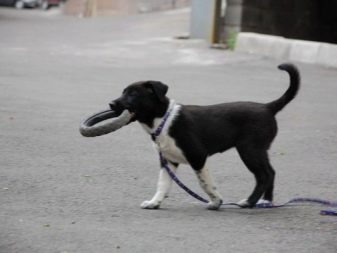
How to tame a stray dog?
Puppies without a breed are not a scarce segment. Where exactly you decide to take non-pedigree dogs does not really matter. Little mongrels are sold in the markets, through Internet resources, they can be taken in dog shelters. However, there are rules to follow when choosing a pet, then taming it will become less difficult.
- Evaluate the area where the dog lives, how the conditions of the parents' detention correspond to the sanitary standards. If everything is neglected and dirty, the dog may be sick.
- Pay attention to the appearance, it should be healthy, there should be no pus and inflammation on the mucous membranes. A healthy dog's nose is wet, and the belly is not inflated.
- Rate the temperament. Too lethargic, apathetic, cowardly, aggressive is not the best option. An adequate puppy is curious, cheerful, active, energetic, playful.
Cowardly puppies are the biggest problem with domestication. Growing up into adult dogs, they will rush at passers-by, strangers. It will be almost impossible to wean them from this. Friendliness is the first sign of a toddler's mental health. He can be careful, this is normal, but after a short period of time he will definitely show interest, sniff, wag his tail. It will be quite simple to tame such a yard dog.
Very often mongrels get to their owners right from the street. If you decide to shelter and rescue just such a dog, you need to do some activities. To begin with, take the puppy to the veterinarian, check his health status, age, there he will be provided with the necessary assistance and vaccinated.


Before picking up a dog, try to find possible owners. She could get lost, or she could be kicked out, for example, because of aggression, inappropriate behavior.
Most often, dogs are either born on the street, or end up there due to the unfair attitude of the owners. After you have interviewed the neighbors, posted up announcements and made sure that the dog is a draw, you have visited the veterinarian, you can take it to you. The algorithm of actions in this case is the same as when buying a puppy. Prepare a place for him, feed him, give him a proper rest, get used to it. The dog needs to sleep off and adapt, to feel safe.
When giving a dog to eat for the first time, do not overload its stomach, which is not used to good food, let the feeding be modest, easy. Cottage cheese, broth, porridge are perfect. Be sure to give the dog a drink. You should not immediately start upbringing, in the first days it is pointless to demand complete submission. A dog that has fallen into the hands of others is under stress, he needs time to adapt. Set aside practice, study, and play for a while.
The first step is to establish relationships, bring them to a trusting, friendly level. This is achieved by gentle handling, regular feeding, care. Having waited, thus, several days, you can go to the veterinarian to assess the state of health, psyche. Vaccination, treatment against parasites should be carried out. After that, you can wash the dog and put on a special flea collar.
Competent training of a street dog will lead to a grateful attitude, devotion. But the instincts acquired on the street will periodically make themselves felt, you should control the dog's behavior at this time. Otherwise, the dog may run away and become homeless again. To prevent this from happening, do not leave your pet alone for a long time, be friendly, take care of him.

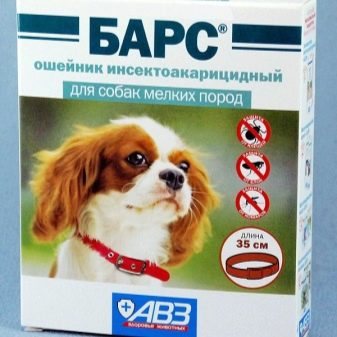
Behavior described by dog breeders as rebellious can be a little troublesome for the owner. Not all yard dogs are susceptible to this, but you need to know how to behave in such cases. If among the ancestors of the dog there were breeds of independent character, the dog can show such qualities.
- Riot - this is the behavior of denial, when the dog does not obey, the look is defiant, and the leader role is tested. It is necessary first of all to pronounce a command that has already been learned - "no" or "fu".
- Puberty. At this time, the dog becomes independent, too self-confident and tries to challenge leadership. The rebellion may not be very pronounced.
- Scream. Shouts at the dog only provoke it to continue the riot. Never raise your voice on a dog, consistency and severity are the best methods of training and education.
- If the riot drags on, make eye contact with the dog, look confidently and calmly. This is the best way to prove your leadership. After the dog has calmed down, the command is repeated one more time.
If the dog obeys the commands, it means that the riot was extinguished. You can say that you are halfway to success.
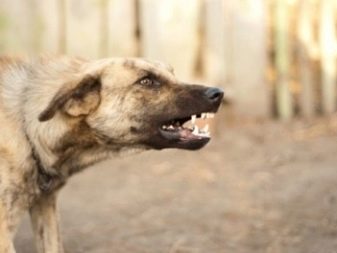

Biting is another inappropriate habit of yard dogs. It doesn't matter what motivation drives the dog - play or aggression. In any case, you will have to get rid of this in the taming process. There are several methods to achieve this goal:
- grip on the nose, which continues until the animal calms down;
- capture of the lower jaw during a bite attempt, light pressure with a finger on the tongue area;
- game biting should cause an immediate cessation of the game and the expression of his dissatisfaction with the behavior;
- you can't bite the dog back;
- Failure to comply with the termination command may be accompanied by a light slap of the newspaper on the rear.
To tame a dog from the street, you have to show firmness, perseverance and character. You need to be calm, confident, but consistent in your actions. Remember that discipline is something to teach your mongrel as early as possible. Moreover, the owner's leadership should be expressed in moral superiority, and not in assault and shouting.
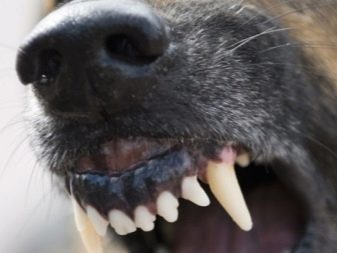

Life span
No specialist will give a 100% guarantee here. First of all, the conditions in which the dog was, the conditions of its maintenance after domestication are very important. Eternally hungry stray dogs, periodically getting into fights and getting injured, are unlikely to live very long. If a dog is taken at a relatively young age and kept in good conditions, it can live much longer than its noble brethren. Good immunity, immunity to diseases make the mongrel a long-liver. In addition, the factor of natural selection has an effect on life expectancy, because the strongest survives in street conditions. Natural hardening makes the dog stronger and more resilient.
Post-taming relationships play a huge role. Poor nutrition, monotonous life, constant sitting on a chain, lack of movement can significantly shorten the life of a dog. Caring for a mongrel, although simple, requires regularity and care. If you want the dog to live a long and active life, you need to make a competent diet, which will contain all the necessary vitamins and minerals. Examine the animal regularly, pay attention to its behavior. Lethargy, refusal to eat are the first signs of health problems.
On average, a mongrel can live from 12 to 18 years.
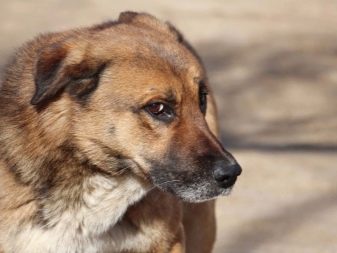

How to determine age?
Finding the age of a street dog is quite difficult. Keep in mind that at six months, the dog is no longer a puppy, but a teenager. It is difficult to determine its age by the way a dog looks. It is best if your veterinarian does it. He will orient himself by the teeth - the most reliable method:
- up to 20 days, the puppy has no teeth at all;
- up to 35 days, fangs appear in the amount of 4 pieces;
- after a month and a half, incisors appear, 6 pieces;
- after two months of age - 3 chewables;
- up to 4 months, the dog should have 28 teeth, then the milk begins to change;
- in six months, the dog should have edges and a fifth root, at 7 months a sixth is added.
You can also find out the age by the molting process, it occurs for the first time at 4 or 5 months. At 6 months, the coat becomes mature, bright, soft. At six months, the dog's gaze matures.
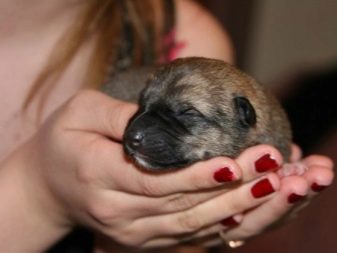

Interesting Facts
The lack of belonging to a noble family does not prevent mongrels from achieving fame and recognition. The stories of such dogs are reflected in the literature, outbred animals have been in space. Monuments are even erected for mongrels. The most stellar mongrels are, of course, Belka and Strelka. Legendary dogs-astronauts successfully flew into space. The history of the Great Patriotic War knows a huge number of canine exploits, when fearless psi looked for mines, blew up tanks, dragged the wounded. Mikhail Bulgakov, Eduard Asadov, Anton Chekhov used the image of mongrels for their brilliant works.
In the next video, you will find interesting facts about the mongrel.






































